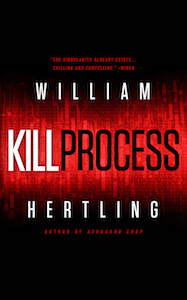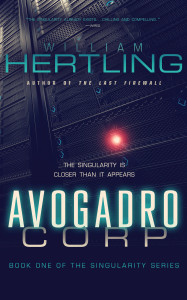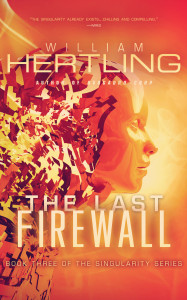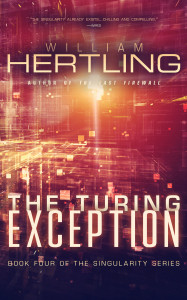Creating Blockbusters
by Gene Del Vecchio
Wow! This was a great talk. (Cue a dozen more exclamation points.) It was so great that I bought his book ten minutes into the talk. Unfortunately, I had to leave early to give a pitch, and I wasn’t able to capture even a quarter of the data Gene shared, but this should give you the flavor of the talk. Buy the book.
- Has done 30 years of consumer research
- Does pilot episode research
- 3 research studies just on Pirates of the Caribean
- Research like “What does an audience want the protagonist to overcome?”
- Most entertainment fails
- most books don’t make back their advance
- most tv shows/movies bomb
- 5% of the movies make 90% of the profits
- audiences tell us why stories disappoint
- 59% say the story was boring
- 50% say it was just stupid
- 39% say it was not funny enough
- 32% say not enough action
- 23% say the characters were not relatable or aspiring
- The analysis
- decades of blockbusters
- biggest movie franchises
- harry potter, batman, pirates of Caribbean, star wars, james bond, shrek, lord of the rings, spider-man, transformers, jurassic park
- blockbusters connect with the kid in all of use
- one approach: take a child-like idea and make it edgy enough for adults, too.
- The Gremlins: first PG-13 movie. Spielberg lobbied for it. Wanted to make a child-like movie that was edgy enough for adults.
- The 11 Principles
- 1: satisfy deep emotional needs
- 2: align with ontemporary culture and trends
- 3: create relatable, aspiring, memorable characters
- 4: generate compelling story ideas
- 5: add broad audience appeal
- 6: build in elements that make it a franchise
- 7: fix common execution problems
- 8: create marketable artistry
- 9: apply the ever-cool formula
- 10: use research to optimize decisions
- 11: launch an idea quest
- Lucas made 4x the money on merchandise than he ever made on movies
- “Marketing is ingrained in what you are writing”. It doesn’t come later.
- satisfy deep emotional needs
- chart with Maslov’s hierarchy of needs: physical needs, safety, love and belonging, esteem, self-actualization
- slide showed chart:
- jurassic park: survival
- princess bride: love and belonging
- esteem: breakfast club
- self-actualization: bad news bears
- best of the best: do all of them
- avatar
- star wars
- Audience opinion
- highest four things audience wanted to see:
- survive life and death: 53%
- be brave: 49%
- fulfill full potential: 45%
- find love w/ family/friends: 45%
- stop evil: 43%
- get respect: 39%
- Character transformation
- emotional
- unconfident to confident
- shy to bold
- cowardice to bravery
- selfish to selfless
- unloved to loved
- physical
- Audience
- weak to strong: 53%
- helpess to survivor: 44%
- loser to winner
- coward to brave
- no love to love
- boring to exiting
- no friends to some
- Fears for protagonist to face:
- death: 36%
- personal injury: 35%
- war: 30%
- kidnapping: 30%
- losing friends: 29%
- being alone: 29%
- kid’s biggest fear: public humiliation. even more than death!
- Align with contemporary culture/trends
- Successes
- Monopoly was invented during the great depression wen people needed the get-rich fantasy
- Barbie was introduced when little girl’s career fantasies were about to explode
- Harry Potter released with interest in magic and fantasy growing
- Trends
- Technology/VR
- total immersion
- social networking
- the great recision
- natural disaster
- environmental sensitivity
- Pop culture
- environmental
- culture
- Character archetypes
- hero type
- ultimate hero: superman
- hero in training: luke skywalker, harry potter
- everyday heros: soldiers, police
- bombling heroes: maxwell smart, austin powers
- nemeses
- ultimate evil: darth vader, voldemort, sharks
- bumbling evil: dr. evil from austin powers
- bully: biff from back to the future
- non-human: storms, disease, fire
- …
- characters in conflict
- hero vs. nemesis
- good/innocent vs. bad/unscrupulous
- conformist vs revel
- responsible vs. irresponsible
- moral compass vs. morally challenged
- striver vs. detrctor
- iconic characters
- warrior
- king
- audience:
- spy/secret agent: 40% (#1 for kids)
- vampire/werewolf: 35%
- wizard, witch: 35%
- adventureer/treasure hunter: 34%
- mom/dad/kid: 34% (#2 for kids, #1 for women)
- warrior/solder: 32%
- mythics gods
- scientist and inventor
- bride/groom, boy/girlfriend: 24% (#2 for women)
- creating compelling story
- lots of different types of conflicts:
- man vs. man
- man vs. society
- man vs. supernatural
- man vs. machines/technology
- man vs. nature
- man vs. self
- the best stories have ALL of these
- morals
- is there a deeper truth? a moral of the story? some virtue?
- the best movies have these:
- the wizard of oz: we all have what we need inside us
- …
- broad audience appeal





